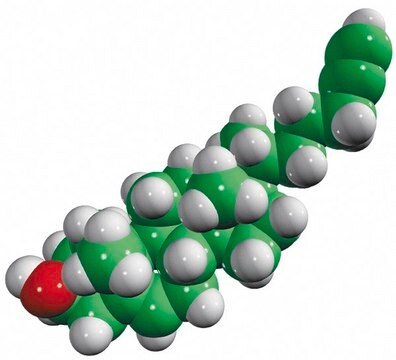Kluczowe dokumenty
901844
Allyl-poly(ethylene glycol)-b-poly(ε-caprolactone)
PEG average Mn 5,000, PCL average Mn 5,000
Synonim(y):
PEG-b-PCL, PEG-PCL, allyl PEG-PCL diblock copolymer, allyl-PEG-PCL
About This Item
Polecane produkty
Postać
powder or solid
masa cząsteczkowa
PCL average Mn 5,000
PEG average Mn 5,000
kolor
white to off-white
PDI
≤1.3 (by GPC)
temp. przechowywania
−20°C
Zastosowanie
Kod klasy składowania
13 - Non Combustible Solids
Klasa zagrożenia wodnego (WGK)
WGK 3
Wybierz jedną z najnowszych wersji:
Certyfikaty analizy (CoA)
Nie widzisz odpowiedniej wersji?
Jeśli potrzebujesz konkretnej wersji, możesz wyszukać konkretny certyfikat według numeru partii lub serii.
Masz już ten produkt?
Dokumenty związane z niedawno zakupionymi produktami zostały zamieszczone w Bibliotece dokumentów.
Klienci oglądali również te produkty
Produkty
Profesor Robert K. Prud'homme przedstawia nanoprecypitację błyskawiczną (FNP) do wytwarzania nanocząstek, która jest skalowalnym, szybkim procesem mieszania preparatów nanocząstek.
Professor Nicola Tirelli (Istituto Italiano di Tecnologia, Italy) highlights the microfluidic-assisted method for fabricating well-defined and reproducible nanoparticles for drug delivery research.
Professor Nicola Tirelli (Istituto Italiano di Tecnologia, Italy) highlights the microfluidic-assisted method for fabricating well-defined and reproducible nanoparticles for drug delivery research.
Professor Nicola Tirelli (Istituto Italiano di Tecnologia, Italy) highlights the microfluidic-assisted method for fabricating well-defined and reproducible nanoparticles for drug delivery research.
Nasz zespół naukowców ma doświadczenie we wszystkich obszarach badań, w tym w naukach przyrodniczych, materiałoznawstwie, syntezie chemicznej, chromatografii, analityce i wielu innych dziedzinach.
Skontaktuj się z zespołem ds. pomocy technicznej
